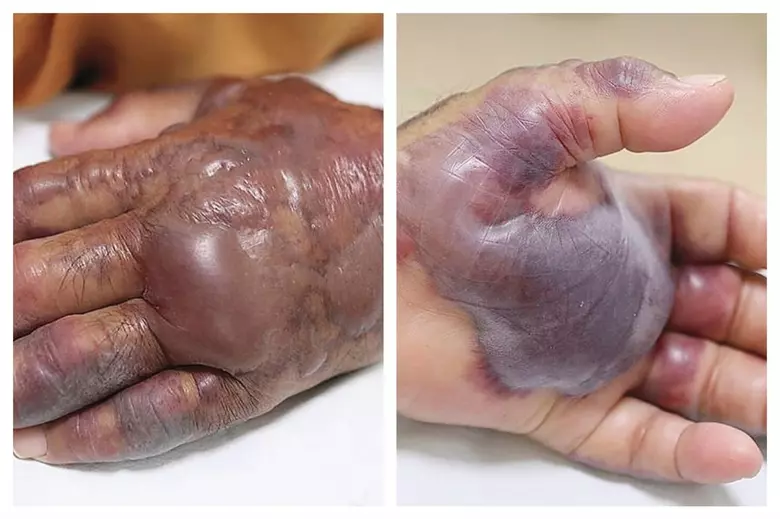Flesh-eating bacteria Gulf Coast cases are causing growing concern among health experts and residents. Several recent infections have been reported across Gulf Coast states like Florida, Texas, Louisiana, Mississippi, and Alabama. While rare, these infections can be extremely dangerous and even deadly if not treated quickly.
But what exactly is a flesh-eating bacteria? How does it spread? Who is at risk? And most importantly, how can you stay safe?
In this in-depth guide, we’ll break it all down in simple language so you can understand the facts, protect yourself, and know when to seek medical help.
What Is Flesh-eating Bacteria?
Flesh-eating bacteria, medically known as necrotizing fasciitis, is a rare but severe bacterial infection that destroys the skin, fat, and tissue covering the muscles. It spreads rapidly and can become life-threatening if not treated quickly.
There isn’t just one kind of flesh-eating bacteria. Different types of bacteria can cause necrotizing fasciitis, but the most common one in saltwater is called Vibrio vulnificus.
Why Are Cases Rising Along the Gulf Coast?
The rise in flesh-eating bacteria Gulf Coast cases is closely linked to warmer ocean temperatures, extreme weather, and climate change. Here’s why:
- Vibrio vulnificus thrives in warm, brackish water (a mix of fresh and saltwater), which is common in the Gulf of Mexico.
- As the ocean warms up, this bacteria grows faster and becomes more widespread.
- Heavy rain, flooding, and hurricanes push more bacteria from the ocean onto land and into places where people can come into contact with it.
- More people are visiting beaches, fishing, swimming, and handling seafood during summer months, increasing the chances of exposure.
In 2024 and 2025, health departments in Florida, Mississippi, and Texas reported several new cases, including some fatalities, making it a topic of urgent public awareness.
How Does Flesh-eating Bacteria Enter the Body?
The bacteria usually enters the body through:
- Open wounds or cuts, even small ones like insect bites or blisters
- Puncture wounds, tattoos, piercings, or surgical scars
- Ingesting raw or undercooked seafood, especially oysters
If someone with a weak immune system eats contaminated shellfish or swims with an open wound in infected water, they’re at greater risk.
Who Is Most at Risk?
While anyone can get infected, certain people face a higher risk of serious illness or complications from flesh-eating bacteria:
- People with chronic liver disease or kidney disease
- Those with diabetes
- People with weakened immune systems (e.g., cancer patients, organ transplant recipients)
- Elderly individuals
- People taking steroid medications
- Individuals with recent cuts, wounds, or surgical procedures
Signs and Symptoms to Watch Out For
Flesh-eating bacteria infections can develop rapidly, often within hours. It’s important to recognize symptoms early. Here’s what to look for:
Early symptoms (within 24 hours):
- Severe pain or burning in the area of a wound
- Swelling, redness, and warmth near the infected area
- Fever and chills
- Fatigue or general weakness
Advanced symptoms:
- Skin discoloration (black, purple, or bluish)
- Blistering or pus formation
- Rapid heart rate
- Confusion or dizziness
- Vomiting or nausea
- Low blood pressure
If you suspect necrotizing fasciitis, seek emergency medical help immediately.
How Is It Diagnosed and Treated?

Doctors usually diagnose flesh-eating bacteria by:
- Checking symptoms and examining the infected area
- Conducting blood tests and imaging scans
- Performing a biopsy or taking tissue samples to identify the bacteria
Treatment often includes:
- High doses of intravenous antibiotics
- Surgical removal of infected or dead tissue (sometimes multiple surgeries)
- In some cases, amputation may be needed to stop the spread
- Intensive care support in severe cases
Early treatment can save lives, so acting quickly is crucial.
Recent Cases Reported in the Gulf Coast (2024–2025)
Here’s a snapshot of recent flesh-eating bacteria Gulf Coast cases that have drawn attention:
- Florida (Tampa Bay): A man died after contracting Vibrio vulnificus through a leg wound while walking on the beach.
- Texas (Galveston): A woman became seriously ill after swimming in warm coastal water with a small cut on her foot.
- Mississippi Coast: Two people were hospitalized after eating raw oysters contaminated with the bacteria.
These cases highlight how simple, everyday activities can turn dangerous under the right (or wrong) conditions.
How to Stay Safe from Flesh-eating Bacteria
While the risk is low, it’s important to take simple precautions—especially if you live near or are visiting the Gulf Coast.
If you have cuts or wounds:
- Avoid swimming in warm seawater or brackish water.
- Cover all wounds with waterproof bandages.
- Wash wounds immediately with soap and clean water if they contact saltwater.
When eating seafood:
- Avoid eating raw or undercooked shellfish.
- Cook oysters and seafood thoroughly.
- Wash hands and kitchen surfaces after handling raw seafood.
General beach safety tips:
- Wear water shoes to avoid stepping on sharp shells or debris.
- Shower after swimming.
- Pay attention to public health alerts or beach warnings.
What Health Experts Are Saying
Health officials and scientists are increasingly warning the public about this issue.
“We’re seeing more Vibrio vulnificus infections in areas we hadn’t seen before,” said Dr. Leslie Tibbetts, an infectious disease expert in Florida.
“Climate change is playing a major role. People with open wounds should absolutely avoid warm coastal waters.”
The Centers for Disease Control and Prevention (CDC) also issued updated guidelines, urging local healthcare providers to be alert for Vibrio-related infections during the warmer months.
The Role of Climate Change in the Spread
Recent studies show that Vibrio bacteria are expanding northward due to rising ocean temperatures.
- A study published in Nature found that Vibrio infections in the U.S. have increased by eightfold in the past two decades.
- By 2040, parts of the U.S. East Coast may see Vibrio exposure for over 6 months a year, including areas previously unaffected.
This means what used to be a seasonal threat is becoming a year-round concern in some coastal areas.
Should You Be Worried?
It’s natural to feel alarmed when hearing the term “flesh-eating bacteria.” But it’s also important to remember:
- These infections are still rare.
- Most people who swim or eat seafood in the Gulf Coast do not get sick.
- Taking basic precautions significantly reduces your risk.
Staying informed, cautious, and aware of your health is the best defense.
Key Takeaways
- Flesh-eating bacteria Gulf Coast infections are rising, mainly caused by Vibrio vulnificus.
- They enter through open wounds or by eating raw seafood.
- Early symptoms include pain, swelling, and fever—seek urgent help if symptoms appear.
- At-risk groups include people with chronic health conditions and weakened immunity.
- Prevention is simple: protect wounds, avoid risky seafood, and practice good hygiene.
- Climate change is contributing to the bacteria’s spread.
Final Word
Flesh-eating bacteria Gulf Coast cases, though rare, are a serious health concern. Awareness is key. With the right knowledge and a little caution, you can enjoy the beautiful Gulf Coast beaches and seafood safely.
If you or someone you know experiences unusual pain or symptoms after being in the water or eating seafood, don’t delay—get medical attention immediately. It could save a life.
Do Follow USA Glory On Instagram
Read Next – CDC Warns Travelers About Chikungunya Cases in China as Global Infections Hit 240,000






